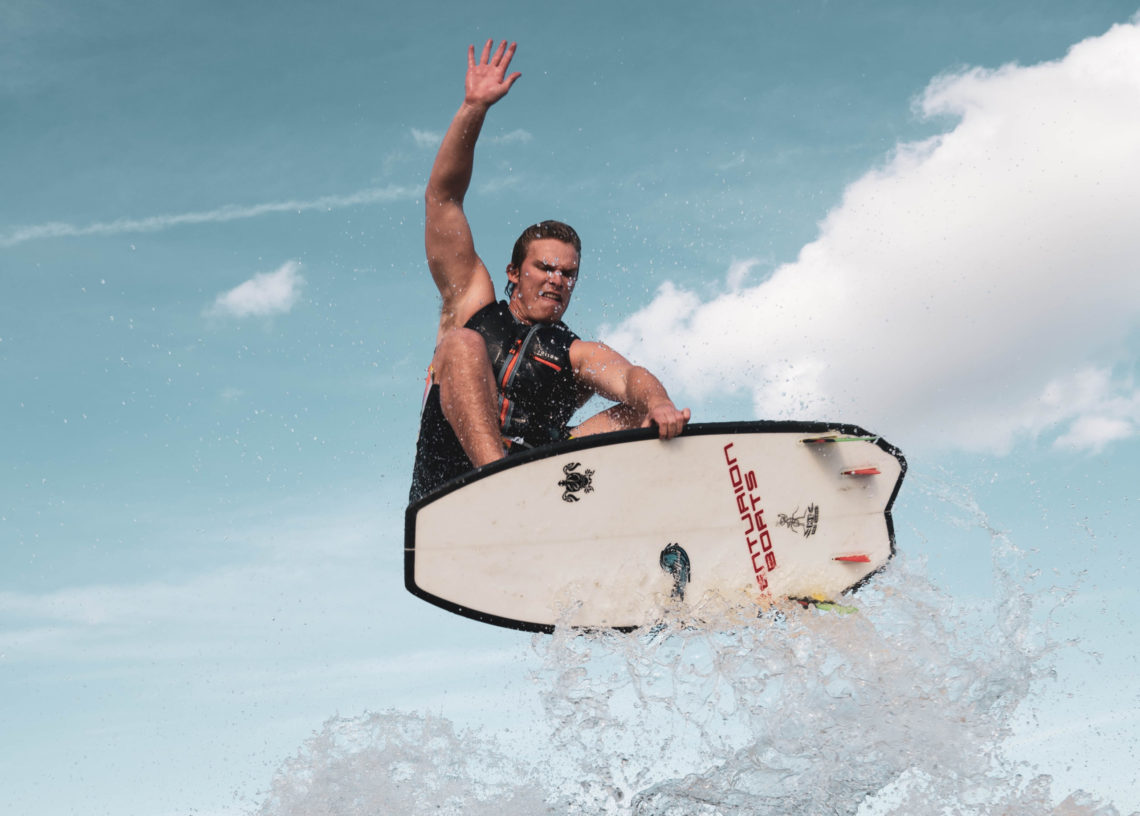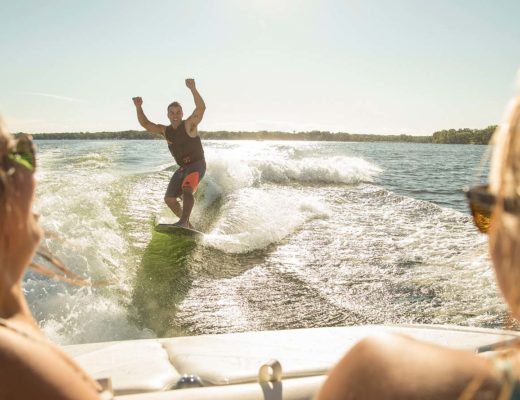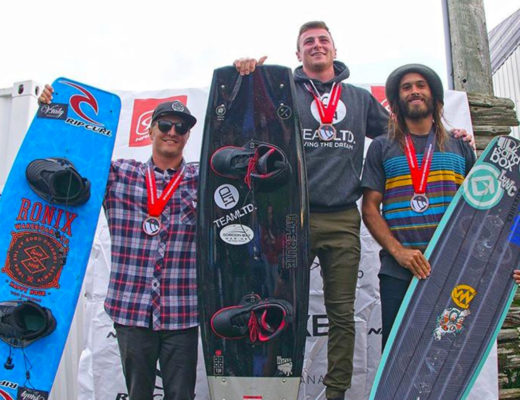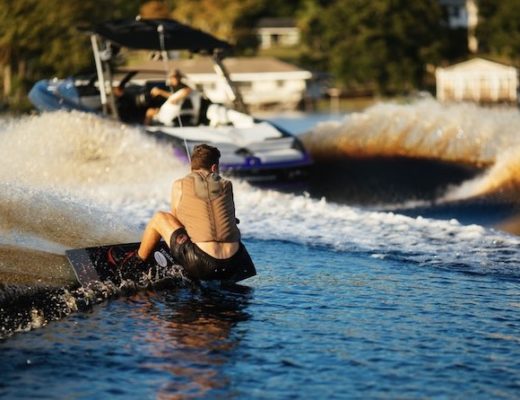I have always grown up as a water child. The home I grew up in overlooked the intercostal waterway that connects to the ocean in south Florida. As soon as I was old enough to get permission from the parents, I pursued water sports. I went out to the dock and flagged down some teenagers on a small inflatable boat to teach me how to wakeboard. Little did I know that day would shape the next 20 years of my life.
From wakeboarding to wake surfing
Shortly after learning how to wakeboard, I was lucky enough to find that Dean Lavelle of LTS wakeboard school. It was located only 10 minutes from where I lived! I trained with Dean from the age of 6-10 and competed in grass roots wakeboarding events.
One day, my feet were sore, and I didn’t want to wakeboard, so Dean suggested I try this new thing called wake surfing. Wake surfing is usually done at 10-11 MPH anywhere from 5-25 feet behind the boat. This is half the speed of wakeboarding and less than half the distance from the boat. I was a little skeptical at first but I gave it a try.
“Fat Sacks”
At this time the boats did not have the technology they do today. Dean had filled “fat sacks” which are huge bags of water used to weight the boat. They created enough weight to put out a surfable wave. I got pulled up on a big old board and started to slide up and down the wave. I started to feel the tension in the rope ease as the wave started to propel me.
Shortly after, the rope went completely slack and I heard Dean shout “throw the rope!”. When I let go of that rope and was just surfing freely across the lake, I couldn’t help but grin from ear to ear. It was in that moment that I decided my wakeboard career was over.
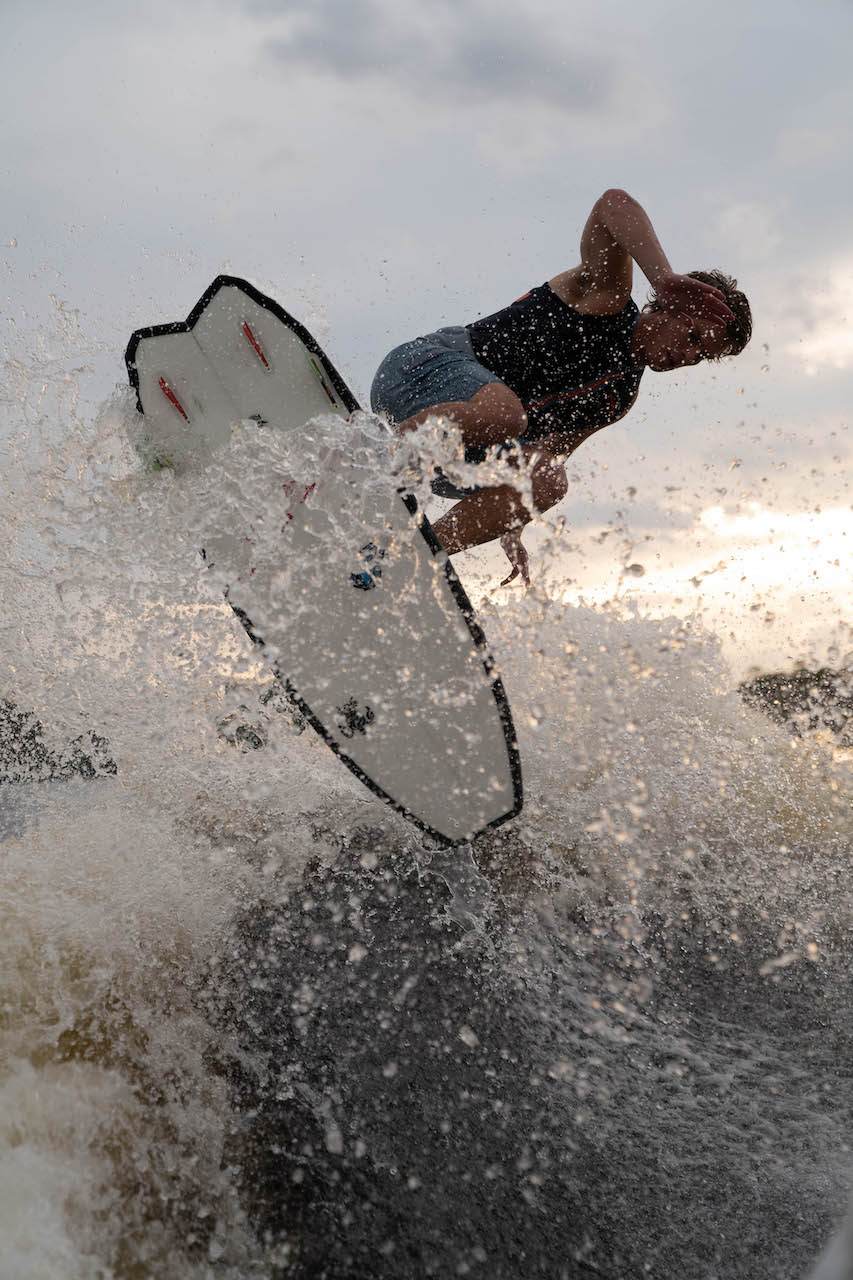
Professional Wake Surfing
My parents and Dean had invested so much time and money to train me to become a professional wake boarder. Nobody knew how to handle it when I changed my mind and wanted to be a wake surfer. At that time, there were professional wake boarders and it was something you could make a career at. Back in 2005 there was no such thing as a wake surfing competition or a professional wake surfer.
Being 10 years old and not worried about making money helped make this choice. I entered wake surfing right as a competition scene began to emerge. I was in the right place at the right time.
The First Competition
The first competition I went to was the World Championship in Merced, California. I won the Junior division of that competition and since then, have won 6 world titles in the pro class. Travelling the world to coach and compete have led to incredible experiences. I have gotten to see places like Russia, Dubai, and Australia. I have had the only undefeated competitive season in the history of the sport and won 2 world titles on my 18th birthday in Las Vegas.
After all those incredible experiences, there’s one that stands out. That first time I got up and threw the rope is the most purely joyous memory of my whole career. For that reason, I love teaching as many people as possible about wake surfing and how to get started. I love seeing that same ear to ear grin on others peoples face as they feel the sensation of the wave pushing them for the first time.
Kit Recommendations
If you have a wake board boat, or know anyone that’s got one, you are in a position to try wake surfing! Most of the newer wakeboard boats on the market will have a surf specific function. There is usually some sort of tab that sticks off the back of the boat to clean up the wave on either side.
If you find yourself in an older boat that does not have a surf setting, my recommendation would be to buy a wake shaper such as the Delta Wake Shaper by Mission Boat Gear. It sticks onto your boat using suction cups. I also would recommend buying some Wakeballast weight bags or fat sacks to make the wake a bit bigger and easier to surf. Once you’ve got the boat dialed in, you will need a wake surf board and a life jacket of some sort (safety first).
I actually recommend a well fitting Coast Guard approved life jacket for anyone learning to wake surf. A good life jacket will keep you afloat while you learn. It’ll help to prevent you from exhausting yourself just trying to keep your head above water.
The Board
There are two types of wake surf boards, skim style and surf style. Just like it sounds, the surf style board will look more similar to an ocean surfboard with more thickness, curvature, and bigger fins. The skim style board will look like an ocean skim board, thin, flat, and maybe one or two small fins.
The style of board doesn’t really matter when getting started, but the bigger the better for beginners. A larger board will be more stable to ride and also make it easier to keep up with the wave. If you are a goofy foot (ride with right foot forward) you want to ride the wave on the starboard side of the boat. If you are a regular foot (ride with left foot forward) you want to start on the port side wave. This will set you up facing towards the wave.
Before jumping in, make sure your rope is tied at a length that leaves the handle about 10-15 feet behind the swim platform. You’ll want a further distance if you have a really nice boat such as a Centurion. This will put you right into the sweet spot when you get pulled up.


Getting on the Board
Now that you’ve got everything set to go, its time to jump in! Once you get behind the boat, you want to lay the board on top of the water between yourself and the boat. The front end of the board should be pointed towards whichever side of the boat you have decided to surf on. The board should be parallel to the swim deck and perpendicular to the rope.
Once your board is positioned in the right direction, you want to place your heels on the edge of the board closest to you. Your back foot should be close to the rear end of the board and your front foot should be somewhere near the middle lengthwise. Your feet should be resting on the board while your lifejacket keeps you afloat.
Footwork
With your feet on the inside edge of the board, you want to hold the rope with two hands. You should lift the handle up as it is positioned right between your knees. To get the board to flip up to your feet, you will want to press those heels down into the water as you lift the handle up with your hands. Pressing your hands and feet away from each other is the best way to get the board to flip onto your feet.
Once you feel the board flush on your feet, you want to stay in the chair position and pretend your friend is trying to help you up from sitting on the ground. I give you this example because it is important not to fight against the boat and push against the water. That’s the best way to strain your back. You want to slowly stand up and let the boat do all the work.
Once you have made it to your feet (Congrats!) you want to let go of the rope with your back hand and try to shuffle your feet to the center line of the board.
Ready to Surf
Alright, now you’re up and riding! To feel the push of the wave you are going to need to keep constant pressure on the inside edge of your board. If you are facing the wave, this means that you want to keep constant pressure on your toes.
Now that you’ve got your hands on the wheel, it’s time for gas and breaks. Leaning forward and reaching your front arm towards the boat will make you surf faster and bring you closer to the boat. Putting more weight on the back foot will slow you down quite quickly. You want to make very small adjustments leaning forward and back. A little shift will go a long way.
The Sweet Spot
Once you start to ride forward and back in the wave you will eventually find the “sweet spot”. This is the part of the wave you should usually be in or near and has the most power. You should notice the rope go slack once you have found the sweet spot. This means your ready to toss the rope and be forever addicted!
I hope you have enjoyed my beginners guide to wake surfing! I would love to see a picture of your first time smile! Tag me on Instagram @keenanflegel and feel free to ask me any questions!
